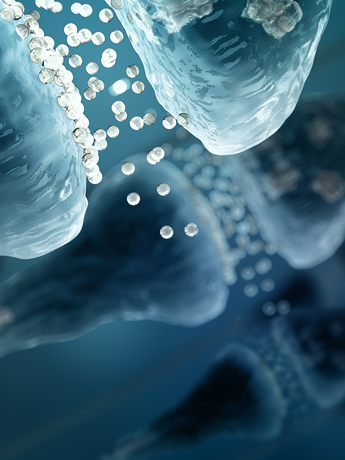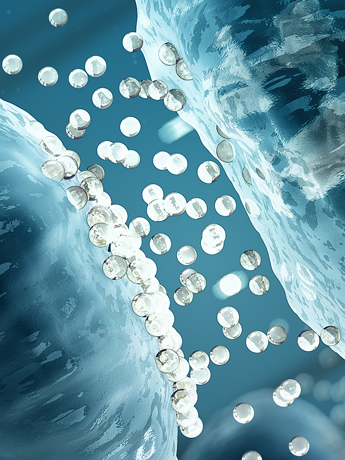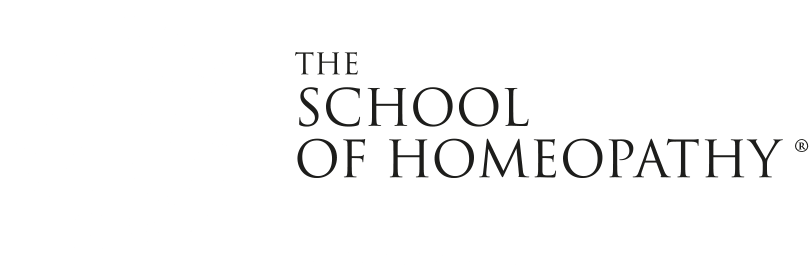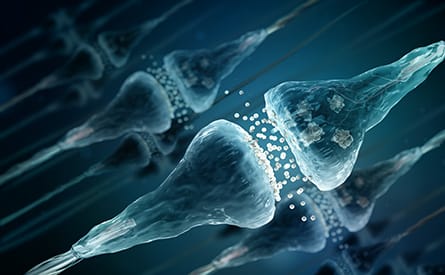

Serotonin
(5-hydroxytryptamine)[Serot.]
Proving date: October 2019
Proving completed by: 13 provers & The School of Homeopathy
Proving coordinators: Mani Norland and Luke Norland
Download: Full proving Seratonin
Download: Proving rubrics
About Seratonin
Profound and frivolous bonding disintegrates into sensation of isolation. Boiling fire or freezing ice. Angelic protection.
Serotonin is a neurotransmitter - when Serotonin reserves are depleted connections are impaired - when elevated they are enhanced. An image which captures the spiritual aspect of this connection is that of a winged angel, bringing love, peace and serenity. It is felt as a Divine connection and communication between all beings. When on a high this person will be a hugger; bringing joy and laughter to any gathering of friends and maternal feelings may arise. Conversely, they can feel rejected, unloved and then withdraw. A polarity between ice and fire encapsulates this remedy’s mode of action - with symptoms of coldness and heat in both mental and physical spheres. The strong and striking sensations experienced by the provers were shooting, stabbing, tingling, pins and needles, whooshing, wave-like symptoms, fullness and swelling. These were often sudden and fleeting.
A polarity between ice and fire encapsulates this remedy’s action well, with symptoms of coldness and heat in both mental and physical spheres. The electrical impulses of serotonin, the chemical messenger, are typically expressed as sensations of: shooting, stabbing and tingling, pins and needles, whooshing, wave-like symptoms with fullness and swelling, and those that are sudden and fleeting.
Serotonin
Serotonin (also known as 5-hydroxytryptamine or 5-HT) is an important biochemical which is present in all vertebrates, some invertebrates and several food plants, such as plantains, bananas, pineapples, walnuts, kiwifruit, plums and fresh tomatoes. It is also present in the defensive stings of sea urchins, some insects and stinging nettles (Urtica dioica), where it acts as an irritant, causing pain, burning and inflammation. The essential amino acid tryptophan is the dietary source of serotonin. High tryptophan foods include meats, fish, tofu, beans, milk, nuts, seeds, oatmeal, and eggs, as well as the fruit mentioned above. Even chocolate contains some tryptophan which is converted into serotonin in the body and can affect mood. Many seeds and fruits which contain 5-HT affect the function of the gastrointestinal tract and the regulation of peristalsis.
Serotonin has been known for over 70 years as one of the significant monoamine neurotransmitters and hormones in the central nervous system (CNS) and peripheral tissues. Serotonin was isolated from the blood serum for the first time in 1948, (Rapport et al., 1948). Soon after, a substance called enteramine was isolated from the gut enterochromaffin cells, (Erspamer and Boretti, 1951), and finally identified to be the same substance as the serotonin discovered in the serum. Although serotonin is abundant in the peripheral tissues, with up to 95% being found in blood platelets and endochromaffin cells (EC), much attention has been focused on its function in the CNS.
The serotonin found in the body is synthesized from the dietary essential amino acid tryptophan, and occurs mainly in platelets in the cardiovascular system and EC cells in the gut. EC cells are a type of entero-neuro-endocrine cell, which modulate neuron signalling in the enteric nervous system (ENS) via the secretion of serotonin and other peptides. Neurons responsive to serotonin in the brain are separated from the peripheral serotonergic neurons, platelets, and EC cells because the blood-brain barrier (BBB) is impermeable to serotonin. This means that serotonin operating as a neurotransmitter in the brain has to be synthesised in situ from tryptophan which can cross the BBB. Serotonin is an important enteric signalling molecule and is well known for playing a key role in sensory-motor peristaltic reflexes and secretory functions in the gut. Abnormal concentrations of serotonin have been associated with IBS, predominantly increased concentrations intensifying gastrointestinal motility and mucosal secretions from the gut mucosa. Severe IBS often manifests as either chronic constipation or chronic diarrhoea, and abnormal EC cell populations have been correlated with both conditions. Much research is currently being carried out on the importance of the gut-brain axis in health and serotonin clearly plays an important role here. In addition, serotonin has been found to play a role in constriction and contraction of other muscular tissues, such as in bronchioles or in the uterus.
Other complex physiological functions of serotonin include modulation of mood, cognition, learning, reward and memory and it is known as a 'happy hormone'; because it is recognised for its power to lift depression, regulate mood, and effect happiness. Dopamine, oxytocin, and endorphins are the other 3 happy hormones. Serotonin also helps to regulate sleep-wake cycles, and suppress appetite. It is necessary for muscle contraction, cognitive function – learning and memory – and plays a role in the autonomic nervous system maintaining blood pressure, heart and breathing rates, temperature regulation, metabolism, arousal and digestion. High levels of serotonin can cause diarrhoea, fever, raised heart rate, dizziness, tremors and convulsions. Serotonin syndrome (extra-high levels of serotonin) can occur as a side effect of some medication and, if not treated, can be fatal. Low levels of serotonin are associated with depression, fatigue, anxiety, insomnia, migraines, OCD-like behaviour and mood swings. It is also very important in vasoconstriction to prevent blood flow, and can induce nausea and vomiting to prevent poisoning. In both modalities (as a neurotransmitter or as a hormone) it operates as an essential communicator chemical. There is a link between serotonin and Seasonal Affective Disorder (SAD). People can be affected by SAD during the Winter months when there is less daylight. It can cause low mood, lack of energy, and disrupted sleep.
At rest, serotonin is stored safely in the vesicles of pre-synaptic neurons located at the synaptic knob. The action potential triggers the release of serotonin vesicles and they move towards the membrane of the pre-synaptic neuron. The vesicle then binds to the cell surface membrane and serotonin is released by exocytosis into the synaptic cleft where it moves towards the post-synaptic neuron and binds to the matching receptor sites there, triggering a new action potential. Normally, a neurotransmitter is reabsorbed (‘reuptaken’) after it has transmitted its neural impulse.
Mythology
Nettle: In Celtic folklore, nettle – 'Devil's claw' – was employed as a threshold guardian to afford protection from sorcery with its sting, and perhaps engaging Serotonin light to fight dark magic. Where they grew was thought to indicate the place where fairies lived and their stings gave protection from witchcraft and sorcery. Nettle was also used to reduce fever by chanting the name of the sick individual whilst picking the whole plant – roots and leaves. The properties of nettle carry the maternal energy of Serotonin. They have been widely used due to their ability to prevent haemorrhaging and stop bleeding from wounds.
History
Discovery of serotonin: In 1935, Dr Vittorio Erspamer identified a substance – enteramine – which was first taken from rabbit gastric mucosa, demonstrating the action of enterochromaffin cells in the gut and their involvement in peristalsis. Erspamer continued working with enteramine, and through research carried out by Maurice Rapport and his team, it was established that both Erspamer and Rapport had identified the same substance, that being 5-hydroxytryptamine.
MDMA (3,4-methylenedioxymethamphetamine) was first synthesised in 1912, and used as an appetite suppressant. In the late 1970s, a group of US psychotherapists used it therapeutically as Ecstacy. Recreational use of MDMA and Ecstacy became popular in the Second Summer of Love, in the late '80s to early '90s, at raves, with garage music and acid house. Despite being categorised as Class A drugs in 1988, MDMA and Ecstacy are still used for their pleasure-inducing and hallucinogenic effects. MDMA causes the brain to flood with serotonin leading to heightened sensitivity, with enhanced feelings of empathy and intimacy. When the effects of MDMA fade the brain is left depleted of serotonin, leading to overwhelming feelings of loneliness and isolation.
Medical uses: Understanding the effect of serotonin means that many drugs have been developed which can modulate its effect. Drugs such as SSRIs prevent the reuptake of serotonin in the synaptic space, thus altering depressive moods. Since 5-HTP increases the synthesis of serotonin, it is used for several situations where serotonin is believed to play an important role including depression, insomnia, obesity, and many other conditions, possibly including Parkinson’s disease.
The proving
The core essence of the proving reflected the chemical impulses of serotonin, with its connection and disconnection at the synapse cleft. The empty space of the synapse cleft itself, emerged in a proving experience, as well: 'I had the most absurd argument with my husband, it was as if we were speaking across the void of the universe in languages from other planets'. For this prover, light was a key manifestation of the proving. She wrote, 'The most significant of my delusions was that I was an angel. These delusions were so real that even now ... a part of me feels as though it is true. The first time I was sitting quietly, meditating, not on anything in particular, just sitting quietly. I felt the wings come out of my back and open up, and I stood up, I was holding a sword and sceptre and there was light beaming out of my chest. I was fierce and powerful, a protector, and my feeling was, "Don’t mess with my people”. After some time I felt the wings fold back into my back, I had the physical sensation of this, and in the opposite place on the front of my body, the light continued to beam out of me.' Connection was described as continuing 'like a golden thread' through the proving, with provers reporting oneness, an intensity of sound and colour, bonding, sense of unification, attachment and wanting to be mothered and hugged; also needing to regress and be childlike. This was expressed by a prover, saying, 'My mum came in so loud were my sobs. My baby had a night terror at exactly the same time. When tried to get back to sleep, it was unreal how cold I was. Completely covered and shivering ... Like there’s no hope. Felt really alone. Like my own 1 year old was forsaking me. If my mum hadn’t come in, I would’ve just carried on crying. We don’t normally hug very much. When someone gives you a really nice hug, you kind of disintegrate.'
High levels of serotonin bring loving feelings and elation, which provers experienced as, being frivolous, fuzzy and stoned: ' We were completely giddy, high, silly, out of control'. The mood swings of serotonin played out in the proving as highs and lows, and were likened to a 'rollercoaster'. This prover wrote, 'I started off on a high with such clarity and joy. Then the next thing I knew there was a complete change in direction, I hit rock bottom. I became tearful, emotional and very low, symptoms that I normally get when having bouts of my depression were dominant. I wanted to sit on [the] sofa and do nothing, speak to no-one, not do any housework or cook. Everything was such an effort. I was irritable with everyone and my tolerance level was so low that I had altercations and spoke my mind as [I] felt I’d had enough of everything.' At rock bottom was disconnection, isolation, and feeling unloved. Low serotonin levels can cause insecurity, and a sense of rejection, bringing about a greater desire for physical bonding, and also inhibit sexual activity. These aspects of the substance emerged in the proving as despondency, with provers comfort eating due to a loss of will power, developing self-esteem issues, and becoming chaotic.
Serotonin is present in platelets, the formation of blood clots, and vasoconstriction (reducing blood flow). Flow featured strongly in the proving. Some provers felt overwhelmed – 'sobbing and couldn't stop' – and a water theme emerged that included 'both happy tears and sad tears', thirst, urinary and menstrual issues. The gut produces more serotonin to expel irritants, causing nausea and diarrhoea, and these symptoms presented in the proving too. High levels of serotonin can cause osteoporosis and this characteristic emerged as pain, and temperature fluctuations – an icy fire which shot into the mental sphere as raging meltdown: 'Explosion of anger – totally lost control.' In this state, provers were disturbed, experiencing fear and palpitations: 'Had a complete and utter meltdown – didn’t want to speak to anybody. I had a little jumper on – and stood there in the freezing cold, and my top was wet and I was racking and sobbing my heart out'.
Download: Full proving Seratonin
Download: Proving rubrics
Angel - Frivolous - Mothered - Unloved - Bonding - Water - Chaotic - Raging meltdown - Icy fire
Proving Themes
John Morgan confirmed that Serotonin hydrochloride was available as a salt (human secretion was not available). Helios Homeopathy supplied the substance for the proving and John Morgan assisted with the pharmacy at the start of this proving. The tincture was run up to the 30c Hahnemannian potency in class.
Recreational use of MDMA and Ecstacy became popular in the Second Summer of Love in the late '80s to early '90s, at raves, with garage and acid house music. Despite being categorised as Class A drugs in 1988 MDMA and Ecstacy are still used for their pleasure-inducing and hallucinogenic effects. Electronic dance music and the use of MDMA evolved hand in hand.

.jpg)
